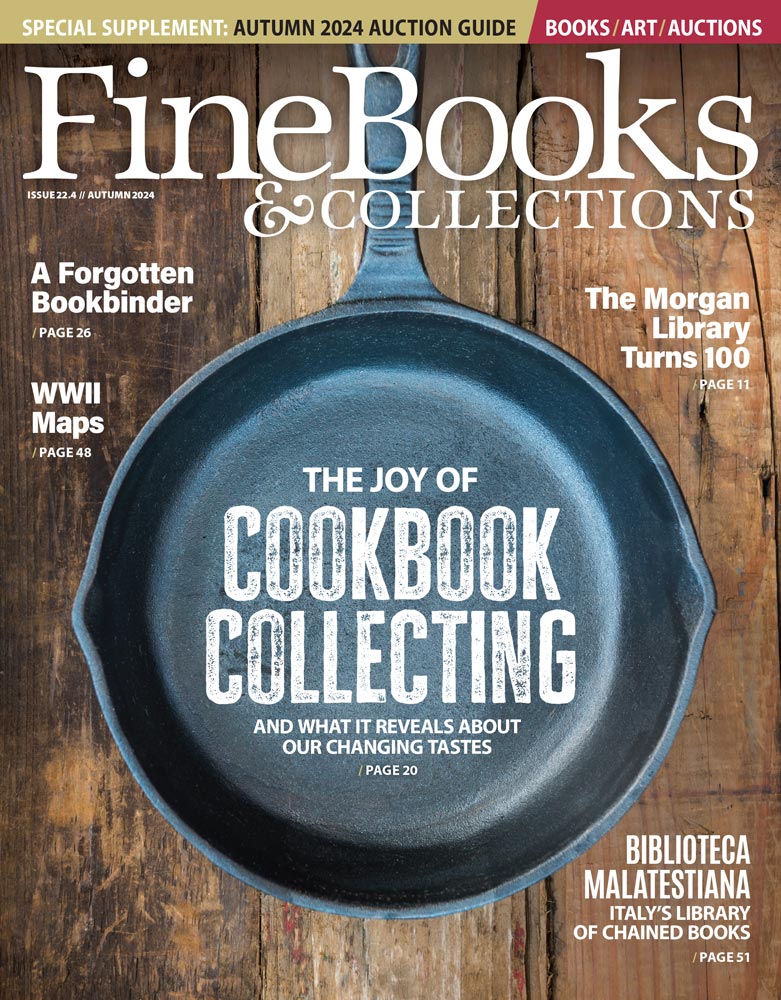Quite a lineup of auctions this week to keep an eye on.
On Monday, November 12, Leslie Hindman Auctioneers sells The Fine Cartographic and Printed Americana Collection of Evelyn and Eric Newman, in 120 lots. Thomas Jeffreys' 1776 American Atlas rates the top estimate at $60,000-80,000. (More on this sale here in our fall Auction Guide.)
Also at Leslie Hindman, on Tuesday, November 13, Fine Books and Manuscripts, in 331 lots. An Abraham Lincoln letter of September 23, 1864, requesting the resignation of his Postmaster General, Montgomery Blair, could fetch $30,000-50,000. A presentation copy of Oscar Wilde's Lady Windermere's Fan, inscribed by Wilde to his friend George Alexander, is estimated at $12,000-18,000.
At Sotheby's London on Tuesday, Travel, Atlases, Maps & Natural History, in 275 lots. Heading up this sale is an unpublished manuscript from 1512 containing accounts various of early European explorations of the Americas (£350,000-450,000). A colored Latin copy of the five-volume Braun & Hogenberg Civitates Orbis Terrarum is estimated at £100,000-150,000.
Doyle New York sells Rare Books, Autographs & Maps on Tuesday, in 462 lots. A fifteenth-century book of hours in Catalan is estimated at $40,000-60,000. Among the lots estimated at $20,000-30,000 are Charles Addams' original drawing for the dust jacket of Dear Dead Days (1959), a graphite portrait of Almustafa, the prophet, by Kahlil Gibran, and a copy of the first octavo edition of Audubon's Birds.
Rounding out the Tuesday sales is Swann Galleries' auction of 19th & 20th Century Literature, in 291 lots. A first edition of Hemingway's first book, Three Stories & Ten Poems (1923), from the collection of Al Hirschfeld, is expected to lead the way at $18,000-25,000. A copy of the 1845 edition of Poe's Tales could fetch $15,000-20,000.
On Thursday, November 15, the eleventh sale of material from the Aristophil collection happens at Ader in Paris, comprising nineteenth- and twentieth-century illustrated books, manuscripts, and autographs, in 225 lots. Heading up this sale is the manuscript of Flaubert's Les Mémoires d'un Fou (1838), estimated at ??300,000-350,000. André Gide's manuscript of Les Caves du Vatican could sell for ??100,000-150,000.
That same day, Kestenbaum & Co. will offer 130 books from the legendary Valmadonna Trust Library, plus Hebrew Printing in America: The Complete Collection formed by the late Yosef Goldman.
Also on Thursday, PBA Galleries sells Fine & Rare Books, in 230 lots. ?douard Traviès' Les Oiseaux les plus remarquables par leurs formes et leurs couleurs (1857) and an early octavo set of Audubon's Birds are both estimated at $20,000-30,000.
On Friday, Cowan's in Cincinnati hosts an American History sale with over 200 lots of early photographs, documents, manuscripts, broadsides, and more. A daguerreotype of Sam Houston, estimated at $10,000-20,000 is one of the highlights.
Rounding out the very busy week is Skinner's biannual Fine Books & Manuscripts sale during "Rare Book Week Boston" on Sunday, November 18. The 354 lots this year include a new-to-market first issue of Poe's Tales in paper wrappers ($60,000-80,000, pictured above), a first edition Book of Mormon ($45,000-55,000), a number of Audubon plates, and some very interesting Arabic and Persian manuscripts.


